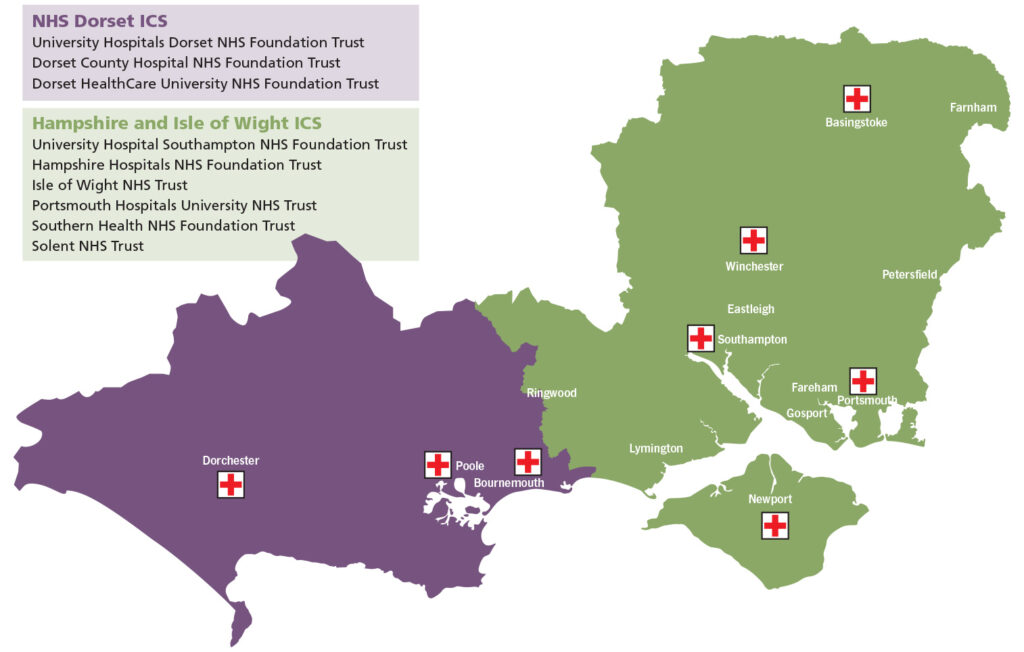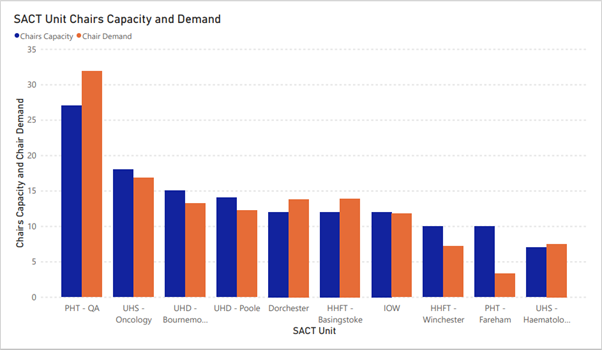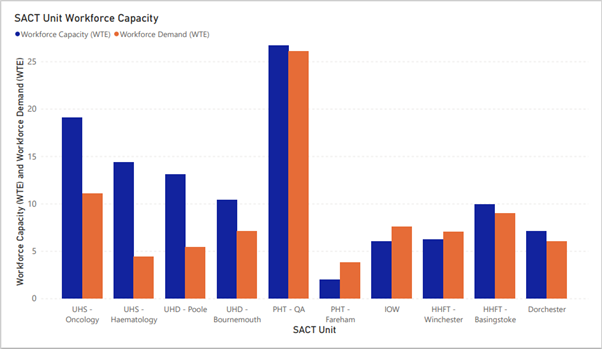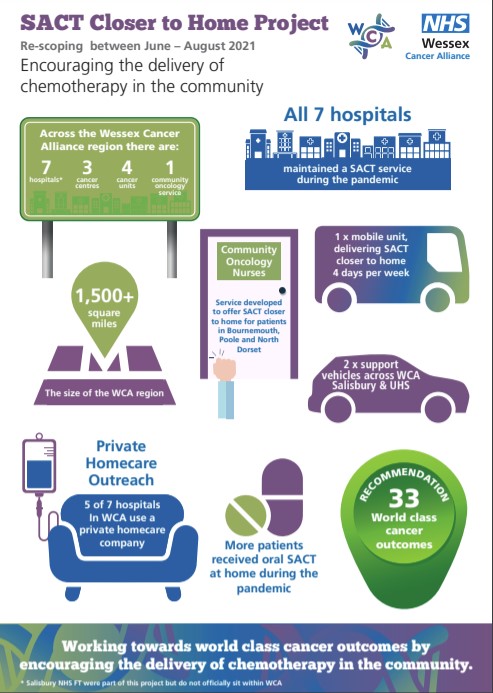SACT units in Wessex were reporting a growing demand on SACT services, including increasing numbers of patients, lack of capacity and an overstretched workforce (lack of SACT trained nurses and pharmacists). New drugs or new indications of SACT drugs were contributing to administration complexity and the longevity of treatment administration.
Patient delays and poor patient experience were also reported as concerns. Our Closer to Home project needed to understand the demand for SACT services and the capacity of the SACT units to make effective recommendations to improve services.
Key Questions
- What is the current capacity of SACT Units?
- How are SACT Chairs being utilised?
- What is the current SACT nursing workforce?
- Where does demand exceed capacity and why?
Methods
The SACT project lead searched nationally for an available capacity and demand tool. We were offered the use of a capacity and demand tool by a pharmaceutical provider free of charge. The SACT project lead collected data from six SACT units, including
- SACT activity, patient treatment profile (e.g. number of new treatments per week, total number of treatment cycles)
- workforce profile (e.g. total number of nurses, contracted hours)
- capacity profile (days open per week, average chair opening times)
Dedicated time was used to analyse the data to place into a workable format before being shared with the pharmaceutical company. The data was entered into the capacity and demand tool for analysis and calculation before the outputs were reviewed. The tool also had the ability to run scenario modelling to predict future service requirements, one such scenario being the 10-15% increase in activity within the next twelve months.

SACT Day Units across Wessex:
- UHS (Hamwic House)
- UHS (C7 Haematology)
- PHT Queen Alexandra
- HHFT Basingstoke
- HHFT Winchester
- UHD Poole
- UHD Bournemouth
- DCH
- IOW
SACT Outreach Locations:
- PHT Fareham
- DCH Bridport
- UHS Lymington
Project Outputs
The outputs have been shared with each SACT unit and have contributed to service change.
- Fifty percent of SACT units are at maximum capacity now (graph below):

- Dedicated SACT treatment chairs are not always used for SACT but for other supportive therapies administered by SACT nurses.
- Fifty percent of SACT units do not have enough workforce now (graph below):

- Retention of SACT trained nurses remains challenging with higher band opportunities and specialist roles being more attractive.
- Every SACT unit has nurses undertaking SACT training, this contributes to the trained nurse’s workload in providing education and support.
- Pharmacy aseptic units contribute to patient delays due to their own capacity issues.
- One Pharmacy aseptic unit is restricted in the number of SACT treatments compounded each day due to safe staffing levels. This impacts on the true capacity and demand picture in this one hospital.
- Challenges to reschedule deferred patients contribute to the increasing demand. Patients also report a poor experience with uncertainty of when SACT treatment will be scheduled.
- All six SACT units will not have enough capacity or workforce in 12 months’ time to meet demand.
Outcomes
A business case using the outputs as evidence, gained successful funding for another SACT nurse to be recruited.
One hospital has increased capacity at its outreach service supported by redeploying staff. It has expanded its out of hospital treatments after gaining confidence in running the outreach service. This has allowed more new patients to be treated on time at the main SACT unit.
One hospital has released chair time by switching from a traditional bisphosphonate infusion to a shorter infusion, releasing chair time to treat more patients.
All hospitals have found benefit from analysing their SACT service and are in the process of repeating this work with us.
Conclusion
- SACT Services across Wessex are currently operating close to or above their capacities
- All forecasts suggest that demand is highly likely to increase by 10-20% year on year
- This means that now is the moment SACT services must put resources and plans in place to ensure that they are prepared for the increase in demand
- We are working alongside a third party provider to facilitate a proof of concept project for a SACT end-to-end service, incorporating pharmacy aseptics and SACT nursing support

